#adcopy
Explore tagged Tumblr posts
Text

In this infographics, we will learn about the key elements of high-converting advertising copy
1 note
·
View note
Text
Enhance Your Marketing with Addlly AI: Advanced Content Creation Tools
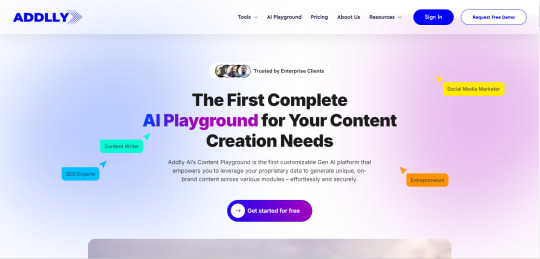
Addlly AI offers a suite of advanced tools designed to streamline and elevate your marketing content creation. From SEO-optimized blogs to engaging social media posts, Addlly AI empowers businesses to produce high-quality content efficiently.
Core Functionality:
Addlly AI utilizes multiple AI models, including OpenAI, PaLM 2, Stability AI, Llama, and Hugging Face, to generate tailored content that aligns with your brand's voice and resonates with your target audience.
Key Features:
1-Click Blog Writer: Craft insightful, SEO-friendly blogs with a single click, enhancing your online presence.
SEO Blog Co-Pilot: Generate detailed, long-form content optimized with real-time keyword insights, improving search engine rankings.
Social Media Post Generator: Create engaging posts for platforms like LinkedIn, Twitter, Facebook, and Instagram, complete with trending hashtags.
Ad Copy Writer: Develop compelling ad copies for Google Ads, tailored to your business objectives.
Benefits:
Tailored Content: Ensure all content reflects your brand's unique voice and style.
Real-Time Data Integration: Access up-to-date information and trends to keep your content relevant.
Enhanced Efficiency: Automate content creation processes, saving time and resources.
Transform your marketing strategy with Addlly AI's innovative tools. Visit aiwikiweb.com/product/addlly
0 notes
Text
#GoogleAds#GoogleAdsCampaign#GoogleAdsSpecialist#GoogleAdsExpert#GoogleAdWords#GoogleAdsManager#GoogleAdsPPC#GoogleAdWordsPPC#PPC#SEM#PayPerClick#GoogleAdsSetup#GoogleCampaign#AdWordsPPC#GooglePPC#GoogleSearch#Advertising#GoogleAdWordsSetup#ManageGoogleAds#PPCCampaign#GoogleSearchAds#SearchAd#AdCopy#AdText#GoogleManagement#GoogleTagManager#ConversionTracking#RemarketingAd#TextAds#KeywordSearch
0 notes
Text

🚀 Boost Your Engagement with Killer Facebook Ad Copy! 💥 Learn the secrets to crafting ads that convert and captivate. Ready to transform your marketing game? Let’s dive in! 📝✨
#Facebookads#AdCopy#MarketingTips#DigitalMarketing#SocialMediaStrategy#ContentCreation#Advertising#EngagementBoost#MarketingSecrets#AdCopywriting#FacebookMarketing
1 note
·
View note
Text
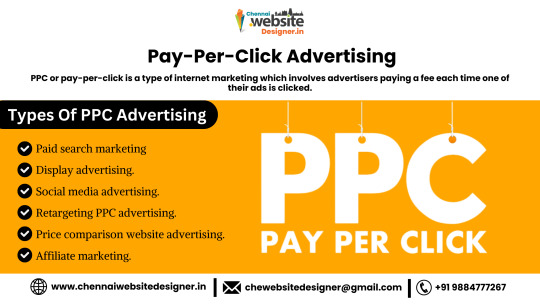
Dive into the world of pay per click advertising and explore the different types of PPC advertising available. 💻💰
#ppcdsalvc#payperclickmarketing#digitalmarketingskills#ᴏɴʟɪɴᴇᴀᴅᴠᴇʀᴛɪsɪɴɢ#googleadsense#searchads#displayads#socialmediaads#ppcmanagement#adwordstips#costperclickcpcandadrank#ClickThroughRate#ConversionRate#KeywordResearch#AdCopy#LandingPageOptimization#Remarketing#PPCStrategy#PPCCampaigns#AdSpend#ROI#MarketingMetrics
0 notes
Text
What is Google Display Ads?
Google Display Ads are a type of online advertising that appear on websites, apps, and social media platforms within Google's vast Display Network. Unlike search ads, which are text-based and appear on search engine results pages (SERPs), display ads are visual advertisements in the form of images, videos, or interactive media.
These ads can target specific demographics, interests, or behaviors of internet users, allowing advertisers to reach their target audience effectively. Google Display Ads can be created and managed through Google Ads, where advertisers can design their ads, set targeting options, and manage their budget.
The Display Network encompasses millions of websites, blogs, news pages, and Google-owned platforms like YouTube and Gmail, providing advertisers with extensive reach and the ability to showcase their products or services to a broad audience across the internet.
Google ads free Course >>> https://www.youtube.com/channel/UCL0h9-P642Hze6IQMvZaUsQ
Hire Google ads Expert >>> https://rafiqmia.com/
#GoogleAds#PPC#OnlineAdvertising#DigitalMarketing#SEM (Search Engine Marketing)#DisplayAds#AdWords#PPCMarketing#GoogleAdsTips#GoogleAdsCampaign#AdCampaign#AdWordsOptimization#PaidSearch#ROI (Return on Investment)#CTR (Click-Through Rate)#CPA (Cost Per Acquisition)#ConversionTracking#Remarketing#KeywordResearch#AdCopy
0 notes
Text
Unlocking PPC Success with Ppc Reveal: Analyze Competitors, Optimize Your Strategy

Are you ready to take your PPC (Pay-Per-Click) campaigns to the next level? Dive into the world of PPC Reveal, a game-changing tool that empowers you to study your competitors' Google Ads and refine your PPC strategy.
In this comprehensive guide, we'll explore the essential tactics for optimizing your PPC ads, including the creation of high-converting landing pages. Learn how to perform a thorough Google Ads competitor analysis using the Advertising Research Positions report and gain valuable insights into your competitors' impression share, average position, and overlap rate.
Introduction: The Power of Competitor Analysis in PPC
Competitor analysis is the secret sauce for a successful PPC strategy. By examining your rivals' Google Ads, you can uncover valuable insights into their keywords, ad placements, and tactics. These insights serve as the compass to fine-tune your PPC strategy, ensuring you stay ahead in the competitive world of online advertising.
The Role of Competitor Analysis in PPC Strategy
Competitor analysis in PPC isn't just about observing your rivals. It's about delving into their keywords, ad creatives, landing pages, and overall strategies to pinpoint areas for improvement. Armed with this information, you can enhance your campaign by adopting the successful elements of your competitors and avoiding their pitfalls.
Benefits of Revealing Your Competitors' Google Ads
Peeking into your competitors' Google Ads can unlock several advantages for your PPC campaign. It provides a clearer understanding of the market landscape, enabling you to spot gaps and opportunities you might have missed. Discovering the keywords and ad copy your competitors employ allows you to fine-tune your ad targeting and messaging to attract the right audience.
Furthermore, understanding your competitors' ad placements and bidding strategies can help you optimize your budget allocation for maximum impact. Learning from their achievements and setbacks enables you to enhance the performance of your ads, increasing your click-through rates (CTRs), conversions, and ultimately, your ROI.
Exploring PPC Reveal and Its Robust Features
Ppc Reveal is a formidable ally in your competitor analysis for PPC campaigns. With a user-friendly interface and comprehensive features, it simplifies the process of gleaning vital insights about your competitors' Google Ads.
Key features of Ppc Reveal include:
Competitor keyword analysis: Uncover the keywords your competitors are bidding on, enabling you to refine your keyword strategy.
Ad creative analysis: Gain inspiration by scrutinizing your competitors' ad creatives and craft more compelling ad copy.
Landing page analysis: Ppc Reveal offers insights into your competitors' landing page experiences, helping you optimize your own pages for higher conversions.
Bidding strategy insights: Understanding your competitors' bidding strategies guides you in optimizing your budget allocation and ad placements.
With Ppc Reveal, you can uncover the secrets of your competitors' PPC strategies, making data-driven decisions that keep you ahead in the fiercely competitive PPC landscape.
How to Harness Ppc Reveal to Unearth Competitors' Google Ads
In today's competitive digital landscape, staying ahead of your rivals is critical for PPC success. One highly effective approach is to delve into your competitors' Google Ads. This allows you to unravel their strategies, keywords, and ad placements, providing valuable insights to supercharge your PPC strategy.
Ppc Reveal is a powerful tool that can lead the way in uncovering your competitors' Google Ads, providing you with a competitive advantage in digital advertising. In this guide, we'll walk you through the process of setting up your Ppc Reveal account, connecting it to your Google Ads account, studying your competitors' Google Ads, and identifying opportunities to enhance your PPC strategy.
Step 1: Setting Up Your Ppc Reveal Account
Before you can embark on the journey of revealing your competitors' Google Ads with Ppc Reveal, you need to create your account. Follow these steps:
Visit the Ppc Reveal website.
Click on the "Sign Up" button to create a new account.
Provide your email address and set a password.
Agree to the terms of service and click on the "Sign Up" button.
Confirm your email address by following the instructions sent to your inbox.
With your account confirmed, you're ready to move on to the next step: connecting your Google Ads account to Ppc Reveal.
Step 2: Connecting Your Google Ads Account to Ppc Reveal
Linking your Google Ads account to Ppc Reveal allows the tool to access your campaign data. To make this connection, follow these instructions:
Log in to your Ppc Reveal account.
Click on the "Connect Google Ads" button.
You'll be directed to the Google sign-in page. Enter your Google account credentials.
Grant Ppc Reveal permission to manage your Google Ads account by clicking on the "Allow" button.
With your Google Ads account connected, Ppc Reveal will begin importing your campaign and ad data.
Step 3: Analyzing Competitors' Google Ads with PPC Reveal
Ppc Reveal offers robust analysis tools to aid in uncovering and understanding your competitors' Google Ads. To examine your competitors' ads, follow these steps:
Log in to your Ppc Reveal account.
Click on the "Competitor Analysis" tab.
Enter your competitors' domain or relevant keywords in the search bar.
Ppc Reveal will generate a comprehensive report listing the Google Ads associated with the domain or keywords you entered.
Review the report to gain insights into your competitors' ad copy, keywords, bidding strategies, and more.
Take note of any interesting findings or opportunities that you can apply to your own PPC campaigns.
Step 4: Identifying Insights and Opportunities for Your PPC Strategy
Once you've analyzed your competitors' Google Ads using Ppc Reveal, it's time to identify key insights and opportunities to enhance your own PPC strategy. Consider these tips:
Identify high-performing keywords used by your competitors and incorporate them into your own campaigns.
Analyze your competitors' ad copy and messaging to draw inspiration for creating compelling and engaging ads.
Study your competitors' bidding strategies and adjust your own bids to stay competitive.
Look for gaps or opportunities in your competitors' campaigns that you can leverage to stand out.
Continuously monitor your competitors' Google Ads to stay updated on their latest strategies and tactics.
By leveraging the powerful features of Ppc Reveal and regularly conducting competitor analysis, you can optimize your PPC strategy and achieve superior results in the fiercely competitive world of digital advertising.
Optimizing Your PPC Strategy Using Competitor Insights
Understanding the Data Provided by Ppc Reveal
When it comes to optimizing your PPC strategy, competitor insights offer invaluable information. Ppc Reveal is your trusted ally for studying and analyzing your competitors' Google Ads, providing you with a competitive edge in online advertising.
Ppc Reveal allows you to uncover vital data about your competitors' ad campaigns, including their targeted keywords, ad copy, and targeting strategies. This data delivers valuable insights into what works for your competitors and guides you in refining and enhancing your PPC strategy.
Analyzing Ad Copy and Keywords of Top Competitors
A fundamental tactic in optimizing your PPC ads is examining the ad copy and keywords used by your top competitors. By scrutinizing the ad copy of successful competitors in your industry, you gain insight into the language and messaging that resonates with your target audience.
Ppc Reveal makes it easy to analyze your competitors' ad copy, allowing you to pinpoint compelling headlines, persuasive ad descriptions, and effective calls to action. Additionally, you can identify the keywords and phrases your competitors are targeting, helping you refine your own keyword strategy for maximum impact.
Identifying Competitor Targeting Strategies
Understanding how your competitors target their ads is paramount for optimizing your PPC strategy. Ppc Reveal empowers you to unearth the targeting strategies of your top competitors, giving you a clear view of their audience and how they reach them.
By studying competitor targeting strategies, you can identify new audience segments you might have overlooked, broaden your reach, and discover new platforms or websites where your competitors are advertising. This information opens the door to untapped advertising opportunities.
Leveraging Competitor Insights for Ad Optimization
Once you've gained a deep understanding of your competitors' Google Ads through Ppc Reveal, it's time to leverage those insights for ad optimization. With knowledge of what works for your competitors, you can make informed decisions to enhance your ad copy, keywords, and targeting strategies.
For example, you can incorporate compelling messaging you discovered from competitor ad copy and align your keywords more closely with your target audience's search queries. You can also experiment with different targeting strategies inspired by your competitors, testing new platforms and channels to reach a broader audience.
In conclusion, using Ppc Reveal to study your competitors' Google Ads and optimize your PPC strategy is a game-changer in online advertising. By understanding the data provided by Ppc Reveal, analyzing the ad copy and keywords of top competitors, identifying competitor targeting strategies, and leveraging competitor insights for ad optimization, you can ensure that your PPC strategy is competitive and effective. Start harnessing the power of competitor insights with Ppc Reveal today!
Enhancing Your Landing Page Conversion with Ppc Reveal
The Role of Landing Pages in PPC Campaigns
A well-crafted landing page is the linchpin of a successful PPC campaign. When users click on your ad, the landing page is where they land, and it plays a pivotal role in determining whether they convert or take the desired action. Your landing page should offer a seamless and engaging user experience, featuring clear and compelling calls to action that drive conversions. A high-converting landing page can significantly amplify the effectiveness of your PPC campaign, maximizing your return on investment (ROI).
Analyzing Competitor Landing Pages with PPC Reveal
To gain a competitive edge in your PPC strategy, it's essential to understand what your competitors are doing with their landing pages. With Ppc Reveal, you can analyze your competitors' landing pages to gain insights into their overall strategy, design elements, ad copy, and calls to action. By studying their landing pages, you can identify areas for improvement and discover new tactics to implement in your own campaigns.
Ppc Reveal provides a comprehensive analysis of competitor landing pages, allowing you to stay ahead of the curve and optimize your own landing pages for better conversions.
Implementing Conversion-Worthy Landing Page Strategies
Once you've analyzed your competitor's landing pages, it's time to implement conversion-worthy strategies in your own campaigns. Start by evaluating the layout and design of your landing page. Is it visually appealing? Is the message clear and concise? Are the calls to action prominent? Optimize these elements to create a user-friendly experience that motivates visitors to take action.
In addition, leverage persuasive copywriting techniques to speak directly to your target audience's pain points and highlight the benefits of your product or service. Use compelling visuals, such as high-quality images or videos, to capture attention and build trust with your visitors. By implementing these conversion-worthy landing page strategies, you can increase your chances of turning clicks into conversions.
A/B Testing and Optimizing Landing Pages for Better Conversions
Even with a well-designed landing page, there's always room for improvement. That's where A/B testing comes into the picture. By creating multiple versions of your landing page and testing different elements, such as headlines, colors, or layouts, you can identify the variations that yield the highest conversion rates.
Continuously analyze the performance of your landing pages and make data-driven decisions to optimize your campaigns for better results. Remember, enhancing your landing page conversion with PPC Reveal is an ongoing process. As the market evolves and new trends emerge, it's crucial to stay updated and adapt your strategies accordingly.
By regularly analyzing competitor landing pages, implementing conversion-worthy strategies, and testing and optimizing your own landing pages, you can continually improve the effectiveness of your PPC campaigns and achieve your desired conversion goals. Unleash the full potential of your PPC strategy with PPC Reveal and transform clicks into conversions.
To view the full review in detail: Click here!
To learn The Power of other software, themes, or plugins: Click here!
To hire any of us as a Video Editor, Audio Engineer, Shopify Expert, YouTube Manager, or Content Writer: Click here!
#PPCStrategy #CompetitorAnalysis #GoogleAds #PPCReveal #DigitalMarketing #PPCTips #AdOptimization #LandingPageConversion #PPCInsights #OnlineAdvertising #MarketingStrategy #PPCAdvertising #CompetitiveEdge #AdCopy #KeywordStrategy #ROI #PPCCampaigns #PPCBidding #PPCTools #PPCMarketing
#PPCStrategy#CompetitorAnalysis#GoogleAds#PPCReveal#DigitalMarketing#PPCTips#AdOptimization#LandingPageConversion#PPCInsights#OnlineAdvertising#MarketingStrategy#PPCAdvertising#CompetitiveEdge#AdCopy#KeywordStrategy#ROI#PPCCampaigns#PPCBidding#PPCTools#PPCMarketing
0 notes
Text

Eye4Future is a leading Content Marketing Agency based in India. Our team of proficient writers specializes in crafting persuasive content that enables businesses to entice and involve their desired audience. We provide assistance in content creation, publishing, and promotion to ensure your business achieves success.
#contentmarketingagencyindia#contentmarketing#contentwriter#websitecontent#adcopy#mohali#punjab#eye4future
0 notes
Text
I have to have a chuckle at the Screenrant article posted recently about the Galactic Starcruiser, which totally wasn't about Jenny Nicholson's video honest.
In part, because early in Nicholson's video, she talks about how unnatural it is to have your influencers speak in adcopy and copyright rather than the more colloquial nicknames, and how it makes the people speaking about the product seem very insincere and, well, paid off. Because normal humans don't speak that way, but advertising does.
What's the first two lines in this article?
"As a life-long fan of Star Wars, there was nothing quite as exciting as finding out that I would be working on the immersive Star Wars: Galactic Starcruiser experience. Located at the Walt Disney World Resort, the Galactic Starcruiser opened on March 1, 2022, and welcomed passengers to board a two-day, two-night cruise through the stars, during which they could live out their own Star Wars adventure."
No one talks like this naturally. No one writes like this naturally.
This is supposed to be your passioned defense of the place you worked at, the people you worked with, and the memories you made along the way. C'mon! Why don't you open with a story, perhaps an anecdote about the best moment you had working there, or the devastation of the day you lost your dream job. We need to feel your humanity! But there's nothing of that here, to the point where you can just hear the TM behind Galactic Starcruiser.
The first half of this article continues in this vein, reading like a press release Disney marketing put out, just with past tense rather than present or future tense:
"Essentially, the Starcruiser experience was a 48-hour movie that passengers were actually a part of. It was all facilitated through the "datapad," which was accessed through the Play Disney Parks app."
"To facilitate the overarching immersive experience and storytelling, the Starcruiser built a jam-packed itinerary for each and every guest that would consist of a variety of important activities: the captain's toast at muster, a bridge training exercise, lightsaber training, and more. These types of events were essential to understanding what was happening, as they would give passengers the chance to interact with characters and build their story. This is why the Starcruiser could never be just a hotel; every part of it was designed for enthusiastic interaction."
Like, c'mon. I used to work in television. I've seen and used adcopy in my former job, and this is some serious adcopy. It honestly wouldn't shock me if the author dredged up some old adcopy they had lying around about the topic and just transferred it over, changing the tense. You're not here to sell us this product, because there is no product to sell. It's gone, it's been gone for a year, you don't have to sell us on IT. Speak about your experiences.
The next part is yet another topic that Jenny Nicholson pointed out, the bad faith excuses that influencers and advertisers made for the extreme price point:
"What many people don't know, however, is that the price included much more than just a room. The passengers' food, park tickets, recreation activities on board, non-alcoholic drinks, and more were all included - with merchandise being one of the few additional costs on board."
Which is absolute bad faith reasoning, especially when there are plenty of other vacation options that are ALSO all-inclusive, but are MUCH cheaper and offer MORE amenities than the Galactic Starcruiser did! Including Disney Cruises, owned by the same company! Seriously, you can go on a halfway decent sounding cruise or all-inclusive resort somewhere warm for, like, a week or two and spend far less than GSC cost.
Then the last part is essentially: "All the workers liked working there and the bad reviews afterwards make the workers who worked on it feel sad. :("
Which, like, companies have been hiding behind that reasoning for ages. Curiously, the author never offers....any reasons or stories. WHY did working on it impact you so much? What set it apart, what were the people like, what did you like about working there, why are you so passionate about it even a year later? There's nothing, just a generic sort of "We worked hard." and "We're sad it's gone." Why? How? What happened? The video you're obviously writing this in response to is filled with personal anecdotes and stories, it's the backbone of the video! Again, you need to give us something to show your humanity!
Especially when you consider that Nicholson repeatedly points out that the only highlight about her experience, the only thing that kept the damn thing going was the workers.
She had nothing but praise for them, and nothing but contempt for the higher ups who wasted and abused that enthusiasm, to the point where one of her last points was "Hey, Disney is basically exploiting labor."
Much like Jenny, I'm also not condemning anyone who had a good time working there. Good! If you were having a good time at work, that's great. If you have good memories about the people, awesome. But I'll note two things:
a) That doesn't meant you weren't being exploited, and
b) That doesn't mean you have to be a useful idiot for the corporation you worked for afterwards.
I'm not conspiracy brained enough to go "Oh, Disney TOTALLY forced this article into being.", because a cursory examination of the author's prior works and such suggests a lifelong passion for Star Wars, she did work at the hotel, and she's a Star Wars Editor (whatever THAT means in this day and age) for Screen Rant. Apparently one of the heads of Screen Rant says that Disney had no hand in it either.
Though, I can see why people would think that way. It READS like a press release, not something a normal human being would write about an experience they feel passionate about.
#jenny nicholson#star wars#galactic starcruiser#disney#screen rant#star wars hotel#disney world#you can't defend with adcopy#you just sound super fake
2K notes
·
View notes
Photo

#ppcadvertising #payperclick #googleads #facebookads #digitaladvertising #adwords #searchadvertising #displayadvertising #remarketing #adcopy #landingpageoptimization #conversionrateoptimization #adspend #keywordresearch #adtargeting #adtracking #adperformance https://www.instagram.com/p/Cos5pMlyF7r/?igshid=NGJjMDIxMWI=
#ppcadvertising#payperclick#googleads#facebookads#digitaladvertising#adwords#searchadvertising#displayadvertising#remarketing#adcopy#landingpageoptimization#conversionrateoptimization#adspend#keywordresearch#adtargeting#adtracking#adperformance
0 notes
Text
0 notes
Text
Elevate your Google Ads with Adwrite! Generate search ads for multiple languages, save hours on ad writing, and improve your ad quality with AI-driven insights.
Learn more about Adwrite's features: [ aiwikiweb.com/adwrite ]
0 notes
Text

#GoogleAds#GoogleAdsCampaign#GoogleAdsSpecialist#GoogleAdsExpert#GoogleAdWords#GoogleAdsManager#GoogleAdsPPC#GoogleAdWordsPPC#PPC#SEM#PayPerClick#GoogleAdsSetup#GoogleCampaign#AdWordsPPC#GooglePPC#GoogleSearch#Advertising#GoogleAdWordsSetup#ManageGoogleAds#PPCCampaign#GoogleSearchAds#SearchAd#AdCopy#AdText#GoogleManagement#GoogleTagManager#ConversionTracking#RemarketingAd#TextAds#KeywordSearch
0 notes
Text
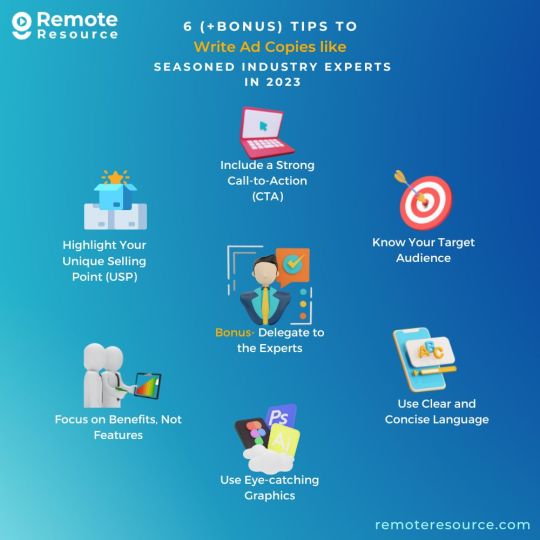
When writing copies for ads to spread brand awareness, it is crucial to understand your target audience, highlight your USPs, focus on benefits, use clear and concise language, include a strong CTA, use eye-catching graphics, and lastly, not hesitate to ask for help.
0 notes
Text
Create engaging video ads without the worry of copyright infringement with our risk-free, copyright-free video ad solutions. Increase your brand's visibility and protect your business with our services.
Reference: https://www.dropshipmedia.com/blog/copyright-free-risk-free-video-ads/
#dropshipmedia#ecommercevideoads#dropshippingvideo#dropshippingads#dropshipvideoads#VideoAds#VideoThumbnails#AdCopies#bestdropshippingvideoads#createdropshippingads#dropshipvideo#dropshipvideos#dropshipvideosfast#dropshippingproductvideos#dropshippingadsmaker#dropshippingproductvideo#dropshippingvideoad#dropshippingvideoadservice#dropshippingvideoads
0 notes
Text
14 Tips for Effective Pay Per Click Advertising
Discover the secrets to successful Pay Per Click advertising with our 10 expert tips. Maximize your online marketing efforts and boost your ROI today.
What is Pay Per Click Advertising?
Pay-per-click (PPC) is a form of online advertising where advertisers pay a fee each time their ad is clicked. This model allows businesses to drive traffic to their websites by paying for visits, rather than relying solely on organic traffic. Pay Per Click advertising campaigns are typically managed through platforms like Google Ads or Bing Ads, where advertisers bid on keywords relevant to their target audience.
The Basics of Pay Per Click Advertising:
Pay Per Click Advertising is used for all types of campaign goals, including:
Increasing sales
Generating leads
Promoting brand awareness
Pay-per-click advertising revolves around the concept of relevance. Individuals are actively seeking particular products, services, or information at various points in time. Advertisers possess the capability to display a tailored advertisement precisely when this search is taking place. For instance, when a user looks up “Loafer Shoes For Men,” an advertiser can present an ad specifically addressing “Loafer Shoes For Men.”

Main Platforms:
Google Ads:
Google Ads, the largest pay-per-click platform, operates on Google, Search Partner sites, and Display Network sites. Since its launch in October 2000, Google Ads has undergone numerous transformations over the past 17 years. It caters to a wide range of businesses, from small enterprises to Fortune 500 companies.
Microsoft Advertising:
Microsoft advertising, similar to Google Pay Per Click Advertising, operates as a Pay Per Click advertising platform that showcases ads on the Microsoft and Yahoo networks. It also incorporates Search Partners. Microsoft advertising is primarily focused on keyword-based advertising. In 2017, Microsoft Advertising had 137 million unique desktop searchers on the Bing Network.
Account Structure:
Campaigns and Ad Groups:
The process commences with advertisers selecting keyword themes and establishing individual campaigns. To illustrate, a Pay Per Click advertising professional may create a campaign centered around the theme “Coffee Tables”. Within this campaign, there are categorized subgroups referred to as ad groups. These ad groups may consist of:
Oval Coffee Tables
Long Coffee Tables
Round Coffee Tables
Keywords:
Each keyword must be assigned a specific match type that determines the queries for which ads will be displayed. There are a total of seven match types for keywords.
Exact – The query must be entered exactly as it is, without any variations or changes.
Exact (Close Variant) – The query must be entered exactly as it is, including any misspellings or variations.
Phrase – The query must be typed in the correct order, regardless of any additional terms before or after it.
Phrase (Close Variant) – The query must be entered in the correct sequence, regardless of any extra terms preceding or following the query. The query may contain misspellings or alternative variations.
Broad – The query can be entered in any sequence and may display advertisements for related searches.
Modified Broad – The Modified Broad match type allows for queries to be entered in any sequence, as long as they include terms with a plus sign.
Broad (Session-Based) – Is a form of broad match that considers the user’s search session and takes into account other queries made by the user.
Here is a table of the match types, keywords, and potential search queries.
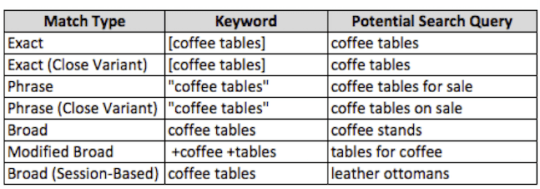
Negative Keywords:
Negative keywords can be utilized to eliminate unqualified traffic in addition to positive terms. For instance, if someone searches for “free coffee table,” they are not likely to make a purchase. By including “free” as a negative keyword, the advertiser’s ad will not be displayed when a query with this term is entered. In the case of a company selling high-end products, negative keywords such as “bargain” or “cheap” may be effective in filtering out irrelevant searches.
Audiences:
Audiences consist of categorized users and are commonly utilized in remarketing strategies. They can be tailored according to factors such as pageviews, duration of site visits, number of pages visited, and other criteria. Similar to keywords, audiences are targeted based on their relevance, with advertisers potentially bidding higher to target specific groups like shopping cart abandoners compared to homepage visitors.
Pay Per Click Advertising Copy:
Expanded Text Ads:
After creating ad groups and selecting keywords, it is time to craft the ads. The ads must incorporate the targeted keyword theme, highlight any value propositions, and include a compelling call to action.
The structure and character limits for Google Ads text ads are outlined below.
Headline 1: Limited to 30 characters
Headline 2: Restricted to 30 characters
Description Line: Maximum of 80 characters
Path 1: Up to 15 characters
Path 2: Up to 15 characters
Advertisements must refrain from using too much capitalization, punctuation, or deceptive claims. It is important to remember that the display URL will merge the root of the final URL with Path 1 and Path 2.
It is significant to mention that both Microsoft and Google have replaced traditional Text Ads with Expanded Text Ads. Although Google Ads still allows the use of traditional ads, advertisers are no longer able to create new versions of this format. The traditional ad format included a 25-character headline and two 35-character description lines.
Every ad group should contain at least two ads for testing purposes. Here is an example of an “oval coffee tables” ad:
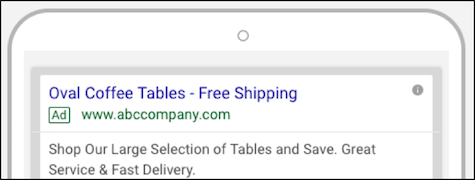
Ensure that your ad copy is compatible with both desktop and mobile devices by writing a single version that will be automatically adjusted for both formats. Keep in mind that the copy will be displayed on both platforms, so make sure it is optimized for both desktop and mobile users.
After clicking, visitors will be directed to a landing page that extends the advertisement’s message. This designated page, known as the landing page, will showcase a variety of oval coffee tables accompanied by information about complimentary shipping.
Product Listing Ads (PLAs):
Product titles, images, and prices are featured in square units called Product Listing Ads, which are commonly used in eCommerce Pay Per Click advertising campaigns.
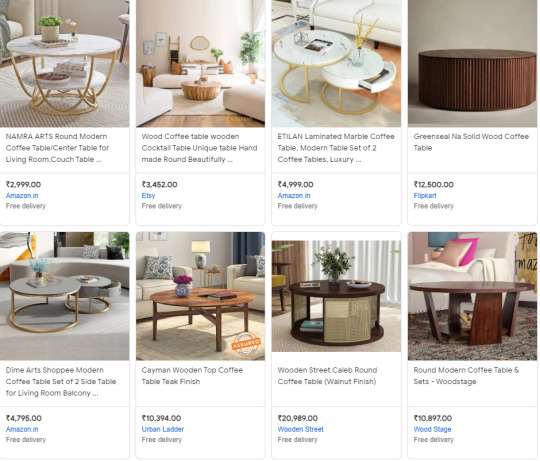
Google product feeds are used by PLAs, which need to be linked to a Google Merchant Center account. On the other hand, Microsoft Advertising has a comparable feature called Product Ads, which also necessitates the use of a Bing Merchant Center account.
Image Ads:
Advertisers have the option to launch Display Network campaigns featuring image ads, which are displayed on numerous sites within and around the content of the Display Network.
200 × 200
240 × 400
250 × 250
250 × 360
300 × 250
336 × 280
580 × 400
120 × 600
160 × 600
300 × 600
300 × 1050
468 × 60
728 × 90
930 × 180
970 × 90
970 × 250
980 × 120
320 × 50
320 × 100
Settings:
Pay Per Click Advertising Campaign Types:
Search Network – The Search Network is the most frequently used targeting option, comprising Google.com and Google’s Search Partners like aol.com, amazon.com, and others. It primarily focuses on keyword-based Pay Per Click advertising, displaying ads when users enter relevant search queries.
Pay Per Click Advertising Display Network – The Display Network comprises numerous websites that display Google text, image, and video ads within their content. Instead of relying on traditional keyword targeting, these ads focus on audiences and demographics. For instance, a user browsing a blog about coffee table history may come across an ad related to coffee tables, increasing brand awareness even if they are not actively looking to make a purchase.
Search Network with Display Opt-In –Is a blend of both networks, replacing the Search Network with Display Select in the new Google Ads interface. By creating a standard Search Network campaign and choosing to opt in to the Display Network, advertisers allow Google to decide the optimal time and place for ad performance, relinquishing some control. While it is recommended to separate campaigns by network, experimenting with Search with Display Opt-In is advisable.
Shopping: Product Listing Ads – Google and Microsoft display Product Listing Ads (PLAs) for shopping purposes. To create shopping campaigns on Google Ads, advertisers need to submit a product feed to Google Merchant Center. Advertisers can then create product groups and bid on different feed attributes such as price, brand, and availability.
Brand
Category
Condition
Item ID
Product Type
Custom Attributes
Shopping campaigns do not utilize keywords; instead, search engines match user queries to the most relevant product. Therefore, it is crucial to maintain accurate information, clear titles, and descriptions for all products.
Pay Per Click Advertising Device Targeting:
Pay Per Click advertising can be shown across all devices, including:
Desktops/Laptops
Tablets
Mobile Devices
Search engines treat desktops/laptops and tablets as similar platforms, applying the same bid to both. However, mobile devices have the option for bid modifiers. For instance, if the bid is $1.00 and the mobile bid modifier is set to -50%, the bid on mobile devices would be reduced to $0.50. Conversely, a bid modifier of 150% would increase the mobile bid to $1.50.
Pay Per Click Advertising Location Targeting:
PPC targeting offers a high level of granularity, reaching down to the zip code level, allowing advertisers to specify where their ads will appear. For instance, a campaign can be set up to exclusively target Iowa, ensuring ads are only shown in that specific location.

Pay Per Click Advertising Scheduling:
Advertisers can choose specific times to run ads, enabling eCommerce campaigns to run 24/7 while brick and mortar stores can display ads only during business hours, making ad scheduling a convenient way to manage when ads are shown. Bid modifiers can also be adjusted for days and hours, such as increasing bids by 20% on weekends for higher revenue or decreasing bids by -80% during low-quality traffic periods like midnight to 4 AM.
Pay Per Click Advertising Budget:
A daily budget is allocated for each individual campaign, and it is important to create budgets that align with the goals of the account.

Pay Per Click Advertising Delivery Method:
Two choices are available for ad delivery: standard and accelerated. The standard method displays ads evenly over the course of the day, suitable for advertisers with budget constraints. On the other hand, the accelerated method shows ads until the budget runs out, ideal for advertisers without budget limitations who want their ads to appear for every query.
Pay Per Click Advertising Delivery:
There are two options for which your ads will be delivered by Google:
Optimize – Delivery is based upon ads expected to produce higher click volume.
Rotate indefinitely – Ads are delivered more evenly into the ad auction, but they are not optimized toward any kind of goal like clicks or conversions.
Technical Pay Per Click Advertising:
Pay Per Click Advertising Conversion Tracking:
Advertisers possess the capability to establish conversion objectives to assess the performance of their accounts. Both platforms offer code snippets that can be inserted on crucial pages, typically order confirmation or thank you pages. Advertisers can ascertain if ad clicks are resulting in conversions.
Google Ads allows many types of conversion tracking, including:
Webpage
Mobile or tablet app
Calls from ads using call extensions
Calls to a Google forwarding number on your website
Clicks on a number on your mobile website
Imported goals (from third party platforms like Salesforce)
Google Analytics:
To gain insights into post click behavior, it is advisable to connect Google Ads accounts with Google Analytics accounts. This linkage offers a comprehensive view of the conversion funnel. To establish the connection, simply input the Google Ads ID number in the “Admin” section of Google Analytics.
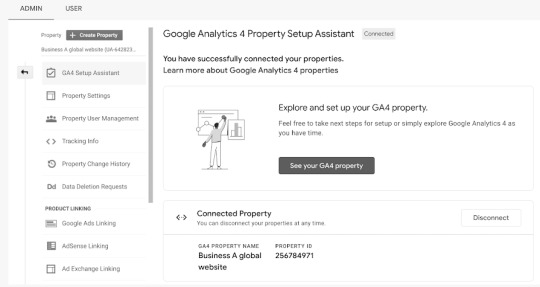
Once added, the connection can be confirmed by navigating to “Account Settings” and then “Linked accounts.” The “View details” section will show the link.
The account can also be linked to Webmaster Tools, which will show how ads and the organic listings perform.
Google Merchant Center:
To execute Google Shopping campaigns, also known as PLAs, the Google Merchant Center account needs to be linked with Google Ads. Just like with Google Analytics, the Google Ads ID should be inputted in the “Settings” area of the Merchant Center account. The account information for Merchant Center will be displayed in the “Tools” section of Google Ads once the connection is established.
Pay Per Click Advertising Remarketing:
Establishing the Google remarketing code involves a straightforward procedure. The remarketing tag is located within the Shared Library and must be copied onto each page of the website before the closing </body> tag. To ensure accuracy, the code can be verified by revisiting the Shared Library.
Pay Per Click Advertising Extensions:
Ad extensions serve as extra links and details that provide additional information about your business, thereby enhancing the basic PPC ads. While some ad extensions can be manually selected and controlled by you, search engines may also generate certain ad extensions automatically. The primary benefit of ad extensions lies in their ability to boost the click-through-rate (CTR) of the ad headline, as they increase the size of the ads and make them more noticeable on the search engine results pages (SERPs). Numerous ad extensions are available to choose from.
Sitelink Extensions:
Sitelink extensions provide extra links for users to explore more pages on your site, and they are manually inserted in Google and Microsoft interfaces. It is important for sitelinks to be related to the search query, and they can also feature descriptions called enhanced sitelinks.
Location Extensions:
Brick and mortar businesses can greatly benefit from using location extensions. These extensions display the business address and can be utilized on both Google and Microsoft platforms. However, it is important to note that in order to use location extensions on Google, a Google My Business account must be set up and linked to Google Ads.
Call Extensions:
Advertisers have the option to utilize call extensions on both Google and Microsoft platforms, providing two different opportunities. These extensions enhance ads on mobile devices by allowing users to easily make a call with a click, making it convenient for mobile searchers to contact the business. It is important to note that call extensions are now included in Google Ads’ dynamic ad extension choices. If phone calls do not benefit your business, it may be wise to disable this feature.
App Extensions:
Google offers a useful feature called app extensions or application extensions, which is beneficial for businesses aiming to boost application downloads and user engagement.
Consumer Ratings Annotations:
Consumer rating extensions are allocated selectively to specific businesses and industries at Google’s discretion.
Seller Ratings Extensions:
Seller Ratings function akin to consumer ratings, automatically sourced by Google from reputable website reviews.
This extension considers the entire business process as well. Companies that effectively implement rating and review extensions establish procedures to regularly request feedback from customers. Search engines also implement procedures to detect fake reviews. A key aspect of this process is the natural progression of ratings. For instance, if a company were to receive fifty 5-star ratings in a single month, it would raise suspicions of potential fraudulent reviews to search engines.
Pay Per Click Advertising Tools:
PPC is an amazing field to work in. The primary goal of search engines is to maximize revenue, and as account managers, it is our responsibility to handle the spending. Search engines are motivated to keep budget managers satisfied and offer tools to justify increasing expenditure. Let’s take a look at some tools that can enhance the effectiveness of a PPC campaign.
Pay Per Click Advertising Change History:
Historical modifications are accessible in Google Ads and Microsoft Advertising, documenting previous changes such as bid adjustments and sitelink inclusions. The information contains the username or email associated with the alteration and the timestamp of the adjustment. It is possible to export the change history.
Keyword Planner:
The Keyword Planner, a feature available on Google Ads, assists in identifying and organizing campaigns, keywords, and ad groups. It also offers performance data estimates that can be utilized to determine initial bids and budgets for PPC accounts.
Display Planner:
The Display Planner serves as a valuable resource for designing Display Network campaigns. It provides a comprehensive list of websites, keywords, topics, and interests that are relevant to your target audience. By utilizing this tool, you can discover numerous new websites, apps, and video channels that are recommended for your campaign.
Pay Per Click Advertising Preview and Diagnostics:
The Ad Preview and Diagnostics tool assists in determining the reason why your ad may not appear for a specific search term, and can be accessed through the Google Ads Interface. Simply input the location and language, and the tool will analyze in the background to provide results.
Pay Per Click Advertising Opportunities:
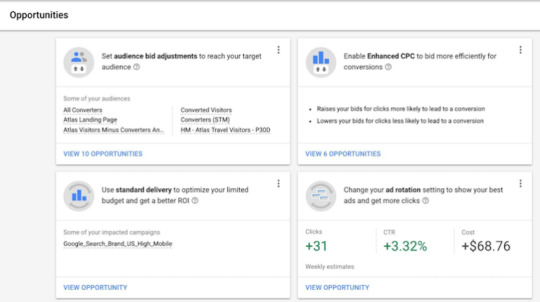
Pay Per Click Advertising Labels:
Labels serve as virtual sticky notes and embedded documentation for campaigns, ad groups, keywords, and ads. They offer versatility, allowing for various applications such as indicating ad creation dates or identifying top-performing keywords. Labels prove particularly valuable in accounts managed by multiple individuals or when dealing with distinct segments that have different objectives. By correctly implementing labels, evaluating the performance of a particular initiative becomes significantly more streamlined.
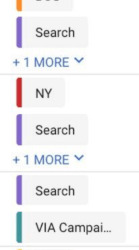
Pay Per Click Advertising Automated Rules:
Google Ads features exclusive automated rules that can be configured based on various performance metrics and scheduled to run accordingly. These rules aim to streamline account management, yet human oversight should not be entirely replaced. It is advisable to establish performance thresholds or safety rules to address any potential decline in performance.
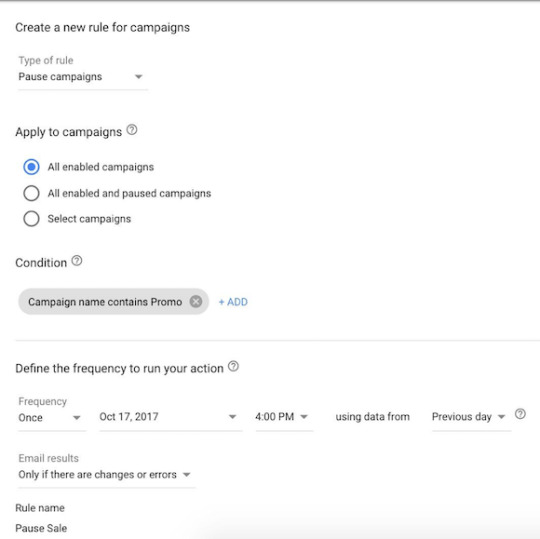
Pay Per Click Advertising Shared Library:
The Google Ads shared library allows advertisers to manage changes across multiple campaigns.
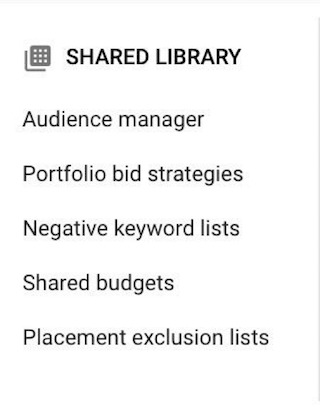
Audiences:
Audiences can be added to Display, Remarketing, and Remarketing Lists for Search Ads campaigns.
Pay Per Click Advertising Bid Strategies:
Automated bidding strategies, known as bid strategies, involve relinquishing control to the search engine to adjust auction bids based on preset goals. These bid goals are established in the shared library, allowing the search engine to utilize algorithms for bid adjustments. Various strategies can be implemented at both the campaign and ad group levels.
Enhanced CPC
Target Search Page Location
Target CPA
Maximize Clicks
Target Return on Ad Spend (ROAS)
Maximize Conversions
Pay Per Click Advertising Budgets:
In most cases, daily budgets are allocated for each campaign. However, there are instances when you may need to reallocate these funds based on campaign performance. The shared budget feature eliminates the need to manually manage and monitor individual campaign budgets. By using a shared budget, Google Ads will automatically adjust the budget for the entire account or a group of campaigns within the account.
Pay Per Click Advertising Campaign Negative Keywords:
Managing negative keywords through the shared library is a time-saving practice for adding them to multiple campaigns. Account managers often have standard lists of adult terms or industry exclusions that can be maintained in the shared library, allowing for efficient management. These lists can be applied account-wide or to specific campaigns within the account.
Pay Per Click Advertising Campaign Placement Exclusions:
Similar to negative keywords, certain websites in Display campaigns have low conversion rates. By including a list of campaign placement exclusions, this list can be shared across multiple Display campaigns.
Pay Per Click Advertising Reporting:
Pay Per Click Advertising Search Query Reports (SQRs):
Search query reports are incredibly valuable and represent a key optimization method. By running SQRs on Google and Microsoft, irrelevant search queries can be identified and added as negative keywords. Furthermore, these reports can uncover fresh ideas for expanding keywords. It is advised to conduct SQRs at least twice a month.
Pay Per Click Advertising Placement Reports:
Placement reports display the websites in the Display network where your ad has appeared. You have the option to modify bids for specific websites or block websites that are generating traffic with low conversion rates. It is recommended to conduct a placement report at least biweekly.
Pay Per Click Advertising Auction Insights Report:
This report, available in Google Ads, is utilized to identify the companies that are vying against your business in the search auctions. The Auctions Insights Report provides valuable insights into your impression share compared to your competitors, helping you decide whether to boost bids and/or budget to enhance competitiveness in the auction. Additionally, it helps in recognizing if you are competing with businesses from different industries, prompting the need to incorporate negative keywords in your campaigns or reevaluate the keywords you are bidding on.
Pay Per Click Advertising Segmentation Options:
When generating reports in search engines, you will always find the ability to segment your data further. You have the option to segment by device, time, network, and various other criteria. With numerous options available, you can achieve the level of detail you need. These segmentation features can be accessed on multiple tabs within Google Ads. Keep in mind that certain segments may only be applicable to specific subsets of data, while others can be discovered after downloading the report from the interface.
Pay Per Click Advertising Filters:
Filters are a valuable feature in both Google Ads and Microsoft Advertising, allowing users to create and save filters for efficient campaign analysis. These filters prove particularly beneficial when dealing with extensive campaigns, as they enable users to break them down into smaller, more manageable segments. By filtering based on various performance data, users can easily make bid adjustments or take other actions to align with their objectives.
Pay Per Click Advertising Columns:
Columns serve as an additional cross advertising platform element that displays predetermined metrics. They are customizable on all tabs across the engine interfaces, allowing for the inclusion of various data points like assisted conversions, competitive impression share metrics, conversion data calculations, and more. Columns provide a valuable tool for tailoring the interface to meet your specific goals and analytical requirements.
Pay Per Click Advertising Display Network:
The Display Network offers a valuable opportunity to increase traffic volume compared to search. While the average cost per click is typically lower on the Display Network, the quality of traffic may not always be as high. It is crucial to thoroughly test all targeting options within the Display Network to guarantee the arrival of high-quality traffic.
Pay Per Click Advertising Targeting Options:
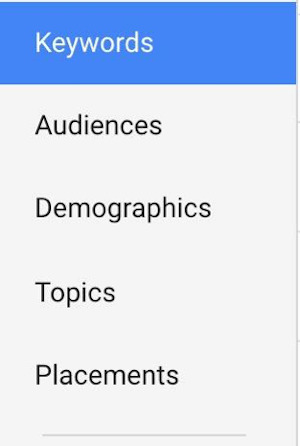
Display Keywords:
Utilizing keywords on the Display Network is known as contextual targeting. These keywords align your ads with websites that share similar themes. For example, the Display keyword “shoes” will be matched with any website that Google identifies as being related to shoes. Unlike search keywords, these keywords are not interpreted literally and are all classified as broad match. Keywords within an ad group function more like a theme. Display keywords can be utilized independently or in conjunction with other targeting methods to narrow down the scope and enhance quality.
Placements:
Placements refer to the specific websites or platforms where your Display ads are displayed. You have the option to allow Google Ads to automatically select placements based on your targeting preferences, or you can manually choose the placements where your ads will appear. When you manually select placements, they are referred to as “Managed Placements.”
Topics:
Display Topics are categories that can be selected to help Google locate websites that align with those categories for displaying your ads. Topics function similarly to display keywords, but instead of creating your own keywords, you select a predefined theme. While display keywords allow for bidding at the keyword level, Topic targeting only allows for bidding at the Topic level. When analyzing Placement reports for Topic targeting, it is important to assess whether the website truly corresponds to the intended theme for the placement.
Interests:
Interests and Topics share many similarities, as they both revolve around specific themes. Nevertheless, the main distinction lies in their focus: Topics are aimed at websites, while Interests are aimed at users. Google determines user interests by analyzing browsing history or self-selected preferences when users are signed in to their Google account. This enables your ads to be displayed on any website that aligns with the interests of your target audience, regardless of the site’s content.
Demographics:
Utilizing demographic targeting enables you to adopt an audience-centric strategy for delivering ads. This feature allows you to modify bidding or restrict your audience according to factors that may influence purchase intent, such as age, gender, parental status, or household income. Gender targeting operates comparably to interest targeting, focusing on the user’s gender using data obtained from their browsing history or their self-identified gender when logged into Google. If you’re marketing a product or service that exhibits varying performance based on gender, this feature is worth testing.
Age:
Age targeting functions similarly to Gender targeting, but it focuses on the user’s age rather than their gender. It is important to be cautious when using both of these demographic targeting strategies. In certain scenarios, like a shared family computer, Google may inaccurately determine the demographics of the users.
Parental Status:
Completing the range of demographic targeting choices is the latest inclusion, known as “Parental Status”. This feature enables the targeting of users based on whether they have children, which can prove highly advantageous when promoting a product or service to parents, such as the sale of baby furniture.
Pay Per Click Advertising Options:
Responsive Ads:
Text-based promotions known as responsive ads are designed to seamlessly fit into various ad spaces. By combining text with relevant imagery, these ads can appear as native content, enhancing their effectiveness by seamlessly blending in with a publisher’s website. Additionally, the reach of these ads is maximized through dynamic adjustments to meet the specific requirements of each ad placement.
Image:
Image advertisements are considered the more conventional form of Display advertisements, as they are exclusive to this particular network. You have the option to upload your own image ads using either the interface or Google Ads Editor. It is important to note that there are various sizes of images that can be used on the Google Display Network. Before uploading, make sure to verify the file size and image resolution to prevent any potential errors.
Pay Per Click Advertising Remarketing:
Basic Remarketing:
The concept behind remarketing suggests that individuals who have previously visited your website are more inclined to make a purchase when they return. However, they may be less likely to click on your advertisement for a second time if they are not already interested in making a purchase.
Dynamic Remarketing:
In order to make use of Dynamic Remarketing, it is essential to have a Google Merchant Center. By connecting this feature to your Merchant Center data feed, you can create personalized ads using product images and details based on the products users have previously seen.
Remarketing Lists For Search Ads (RLSA):
Remarketing Lists for Search Ads (RLSA) function similarly to display remarketing by targeting previous site visitors based on their browsing behavior. Custom combinations can be created for more targeted campaigns. The key difference is that RLSAs target users through Search rather than display.
Dynamic Search Pay Per Click Advertising:
To prevent mixing up search queries, add all non-low search volume keywords currently enabled in your account as negative keywords for your Dynamic ads. Select this campaign type in the settings and ensure you create a dynamic ad type. Focus on your targets by writing targeted ad copy and adjusting bids/budgets accordingly based on categories, URLs, page titles, or page content. Exclude pages on your site that you do not want to be used for ads, such as those containing the phrase “out of stock”. Use the “+ Exclusions” button under the dynamic ad targets section of the auto targets tab.
Conclusion:
This guide provides an excellent introduction to the realm of PPC. It covers all the essential aspects you need to know when starting or delving into PPC accounts shortly after their launch. Nevertheless, the unofficial mantra of the PPC industry is “always be testing.” It is crucial to experiment with various features and strategies for your account. Each account is distinct and will respond differently to different features and strategies. While there are established best practices that generally yield positive results for most accounts, you can only truly ascertain their effectiveness through testing.
Visit: https://chennaiwebsitedesigner.in/
#AdBudget#AdCampaigns#AdCopy#AdMetrics#AdPerformance#AdTargeting#ConversionRate#CTR#DigitalMarketing#DisplayAds#GoogleAds#KeywordResearch#OnlineAdvertising#PaidSearch#PPC#ROI#SearchAds#SEM#SocialMediaAds#TargetAudience
0 notes